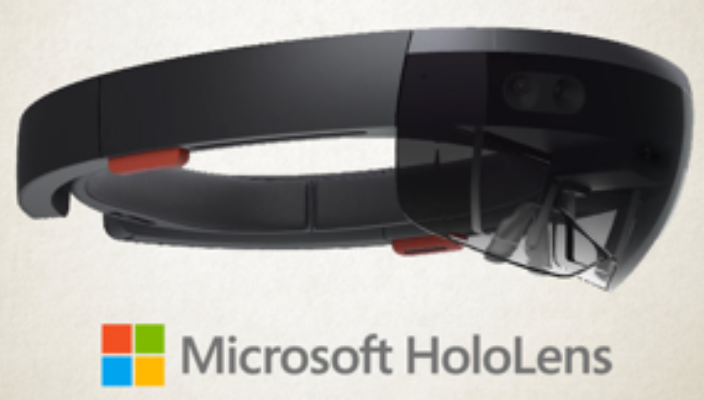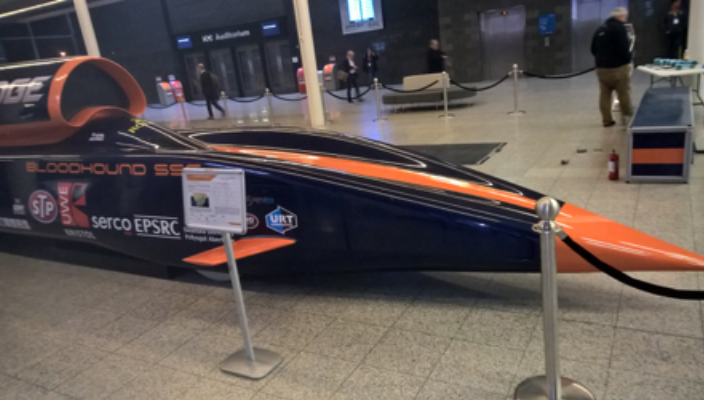Microsoft Azure, is a cloud computing platform that runs your applications at scale on the internet. Azure lets you store your data securely and gives you the business intelligence tools to explore it. It helps you build applications, test them in a safe environment and launch them, knowing that performance won’t be an issue even if they are being accessed from the other side of the world. It will also help you build on your existing IT infrastructure, creating hybrid solutions that simplify your IT and reduce costs.
Microsoft Azure is essentially a growing collection of integrated services – analytics, computing, database, mobile, networking, storage and web – that are flexible enough for you to use as and how your business needs them. With Microsoft Azure, you’ll move faster, achieve more and save money.
A place to build, test and deploy applications
Any developer or IT professional can be productive with Azure. Azure’s integrated tools, pre-built templates and managed services make it easier to build and manage enterprise, mobile, web and Internet of Things (IoT) apps faster.
An open platform
Microsoft Azure is a flexible and open platform that supports a broad range of operating systems, programming languages, frameworks, tools, databases and devices. You can run Linux and Docker containers; build apps with JavaScript, Python, .NET, PHP, Java and Node.js; build back-ends for iOS, Android and Windows devices. Azure supports the same technologies that millions of developers and IT professionals already rely on and trust.
An extension of your existing IT
Azure easily integrates with your existing IT environment through the largest network of secure private connections, hybrid database and storage solutions, and data residency and encryption features – so your assets stay right where you need them. You can even run Azure in your own data centre with Azure Stack. Azure’s hybrid cloud solutions give you the best of both worlds: more IT options, less complexity and cost.
A safe place for your data
Microsoft has made an industry-leading commitment to the protection and privacy of your data. It is the first cloud provider recognised by the European Union’s data protection authorities for its commitment to rigorous EU privacy laws. Microsoft was also the first major cloud provider to adopt the new international cloud privacy standard, ISO 27018.
A global network
Azure runs on a worldwide network of Microsoft-managed data centres across 19 regions. This fast-growing global footprint gives you more options for running applications and ensuring great customer performance.
An economical and scalable solution
Azure’s ‘pay as you go’ services can quickly scale up or down to match demand, so you only pay for what you use in one simple monthly bill. Per-minute billing and a commitment to match competitor prices for popular infrastructure services such as compute, storage and bandwidth means you’re always getting an unbeatable price for performance.
A source of insight
Azure’s predictive analytics services such as Machine Learning, Power BI and Stream Analytics are redefining business intelligence. Make smarter decisions, improve customer service and uncover new business possibilities from your structured, unstructured and streaming Internet of Things data.
After discussing the challenge of consolidating seven datacentres down to two with my team at Redblade, now a Cloud Direct company, I took a little break to check out Future Decoded 2016. With the ‘cloud first’ philosophy that’s all the rage these days, why would you need your own datacentre now anyway?
Future Decoded is a Microsoft conference held yearly at London Excel. It’s split into a business day and a technical day with keynotes, expo (vendor stands) and breakout sessions.
The UK’s National Cyber Security Strategy
I most wanted to see Stephen Hawking’s keynote on the Business Day, but unfortunately he could not make it. Instead we had Chancellor of the Exchequer, Phillip Hammond, which didn’t excite me too much as replacements go, however his keynote was surprisingly good. His insights on security and the National Cyber Security Strategy was one of the standout keynotes of the day. You can find out more about the National Cyber Security Strategy 2016 to 2021 here.
Disruptive technologies at Future Decoded
During the DevOps technical sessions on Day 2 there was emphasis on disruptive technologies.
Without doubt, the biggest disruption to the taxi industry and possibly transportation in general has been Uber. During a family visit to Johannesburg earlier this year, I couldn’t help but note that Uber had been widely adopted as a verb: “If we’re going to have a beer, we might as well Uber”, “I can’t come and get you, just Uber home”… it’s uncanny that just a year or two ago no one used the word. It’s a refreshing change in a city where catching a taxi meant taking your life into your hands.
Docker in Windows Server 2016 / Azure
Another game-changer on the dev-ops track was the sessions about the adoption of Docker in Windows Server 2016 / Azure. A step towards becoming a Docker Captain and moving workloads or ‘containers’ from on-premises up to Azure and back down again will make our lives even easier. Turn on the cloud tap when you need it, switch it off when you don’t. Did you know you can run Linux workloads on Azure?
The future is Microsoft HoloLens
Seeing Microsoft’s HoloLens was like stepping out of the DeLorean from Back to the Future, which coincidentally (or not) was displayed just inside the entrance at the Expo. What’s that quote: ‘If my calculations are correct, when this baby hits 88 miles per hour… you’re gonna see some serious s&^%!’

The Microsoft HoloLens is game-changing tech. The idea that you can watch TV and have the weather on another screen and play Pokémon at the same time is nothing new – my kids seem to play Minecraft while watching The Simpson’s intuitively – but I predict that the HoloLens will allow dear old dad to pull it off before too long.

Some of the other exhibits to behold: a giant Rolls Royce Jet engine was just hanging out …

My next city car, the ‘Bloodhound’:

After a bit of a wander, I headed over to watch a keynote, presented by Chris Messina who is the Experience Lead at Uber, who was talking conversational apps and tech industry disruption:
- In 2007, Facebook was the world’s largest media company, but has no physical media real estate.
- Uber – the world’s biggest taxi company owns no cars
- During his segment, he played Steve Job’s iPhone keynote. Never thought I’d see an Apple video playing at a Microsoft event.
The whole ‘Who moved my Cheese’ philosophy is happening at a more rapid pace than ever before, Uber being the prime example. Someone right now is planning to take the shirt off your back by disrupting the industry you work in, in ways you’d never expect. Look out for words like ‘deep machine learning’ and ‘artificial intelligence’ on your big data.
By this stage the free coffee was being replaced with free beer.
Cloud Direct’s flight simulator at Future Direct
As a last blast I took a walk on down to Cloud Direct’s stand at the expo where the team had set up the steam version of Microsoft Flight simulator, running on Windows 7. They were unwise enough to let me have a go landing a Boeing jet. The scenario was that the plane had been blow off course in gale force conditions, and it was up to me to right the ship and put the old bird safely on the runway.
The experience was rounded off by a Top Gear style leader board and instructor, who offered a few invaluable pointers on how I should go about sparing the hundreds of souls sat in the plane behind me.
After a rocky practice session I gained the basic roll, yaw and pitch skills required to place the plane on the ‘mac rather than through it.
Fighting the stiff breeze , I brought the Boeing down with a respectable score of 790 out of 1000. The instructor tells me that while all the passengers survived, few of them would have kept down their gin and tonic! I think the image sums up my feelings on that front:

All in all it was a fun two days and well worth the visit to catch up on the cutting edge in tech.
Hope to see you there next year!
Are you thinking of choosing a new, more cushioned loo roll brand for your business lavatories? Are you planning to trawl the Pacific just as a team of South African hustlers fly overhead with an old Russian plane full of skittish cattle?
These are glimpses of two of “Five weird and wonderful stories of business continuity” that I shared during my keynote session at Microsoft’s annual European conference: Future Decoded.
Here, I’ll share with you a few personal take-aways from the event, plus a brief synopsis of my presentation: “How cloud solutions are essential to your Business Continuity & Disaster Recovery (BCDR) strategy”.
Business continuity and disaster recovery are critical for all regulated businesses. But it can be a real challenge to find a solution that is flexible, simple and secure enough to work for your business.
Will Rowley, Cloud Direct professional services manager and Chris Mulgrew, Microsoft engagement specialist, touch on these challenges and how to overcome them with Microsoft Azure, in this webinar recording.
You may recall Microsoft’s “cloud-first, mobile-first” vision from my previous post – SharePoint: a lover not a hater. It describes today’s world of employees working on corporate applications, accessing data from on-premises and cloud-based systems – from anywhere, on any device. Tools such as Microsoft PowerApps help achieve this vision. It’s currently in public preview and available via the Office 365 portal. Let’s take a look.
Free your IT department from small projects
Traditionally, application development has resided within the realm of the IT department. However, often development time is expensive, constrained and typically focussed on larger scale strategic projects, which typically results in smaller scale projects being overlooked or side-lined. Yet while the gains from smaller scale projects may only be incremental, when combined, they can bring real benefits.
Unlocking innovation in apps – no coding required
PowerApps can help bridge the gap by allowing traditional developers to focus on the big-ticket projects using traditional tools and empowering less technical staff or even end-users to build smaller scale applications to address specific business challenges.
In simple terms, PowerApps allow virtually anyone – with little or no coding skills – to build an application that can leverage data from a multitude of sources including Office 365, Azure and a growing source of third party services. These applications can be built and deployed to run on IOS, Android and via the web rapidly and easily – cutting costs and organisational red tape.
The more things change, the more they stay the same
The idea of empowering end-users to develop apps that address specific business needs may sound revolutionary. But this is not new. It’s already happening with expense reporting, project management and time recording. Historically, these systems have either been built by power users or contractors and often ex-employees, based on a variety of office tools including MS Access, Excel, Word and VBA. These applications are typically clunky, difficult to mobilise and support and rely on traditional infrastructures.
Putting it all together
With PowerApps, however, you can quickly connect users and technology to create the custom apps that solve your business needs. You can connect to the things you already have, build apps without writing code and publish and use on the web and mobile devices. In summary…
1. Just add PowerApps
Get inspired with pre-built templates or, if you prefer, start from scratch. You already have everything you need at your fingertips
2. Turn data into apps
Generate a meaningful app for your business by connecting to existing data sources and services – such as Excel files, SharePoint lists, CRM records or your custom APIs.
3. No code required
Customise a fully-functional app to build your own using device capabilities such as cameras, GPS and pen control – all without writing a line of code.
If you’d like to find out more about how Office 365 and Azure can help your business in a cloud-first, mobile-first world, please get in touch.
Integral to an organisation’s growth is its ability to keep up with constantly evolving technology – new releases, updates and trends. Similarly, the consumerisation of IT means business users expect as engaging a user experience (UX) with their work IT as they do with their gaming or social IT at home.
So organisations have to step up to the mark if they want to keep an increasingly disparate workforce working together, productively. This blog explores how LiveTiles does this over Microsoft Sharepoint, Azure and Office 365 – adding even more cool to the cool new SharePoint features.
Moving up the priority list: a great employee user experience (UX)
Firstly, what is UX? UX is the quality of human interaction a person has with a system or site. As employees experience ever decreasing amounts of human interaction, the importance of exceptional UX is becoming a high priority for many companies right now. Why? Because they want to:
- Bring geographically dispersed teams together
- Promote communication and collaboration
- Create a digital workplace
“The true transformation in digital transformation isn’t the presence of technology where there previously wasn’t any; it’s the transformation of the way we interact with it. It’s the digital workplace and everything that we are able to affect within the frame of our virtual existence, bringing us closer to our colleagues, employers, and administrators in an instant.” 1
LiveTiles – the number one digital workplace
Companies of all sizes and industries can use LiveTiles to build UX focused digital workplaces. With it you can surface and organise scattered business apps, resources, files on a virtual pane of glass over Office 365, SharePoint and Azure.
The suite includes LiveTiles Design, Build and Blueprint. The products are bundled together into the LiveTiles SharePoint package bringing together everything you need to create your own custom digital workplace. LiveTiles have built this suite for Microsoft Azure and SharePoint because they believe it is the best of breed in business software. The idea, is that with this suite of products, you can evolve your current software and get ahead of the technological evolution.
“LiveTiles, in partnership with Microsoft’s Office 365 suite and SharePoint, is bringing the features you’ll need for collaboration, teamwork, intranets, and project management tools to your canvas. With digital design strategies from our team, your digital workplace can increase employee engagement and amplify your UX.” 2
The theory behind the technological evolution of LiveTiles
The theory of technological evolution, according to distinguished U.S. airman and author Masse Bloomfield, is broken down into three stages: tools, machine and automation. We can use this theory to explain how LiveTiles evolves the UX of your Microsoft ecosystem.
Tools: the tools behind LiveTiles
The emergence of technology was made possible by human’s development of the rational faculty; the ability to think, to ration things out, common sense, intelligence and judgement. This paved the way for the first stage of the theory: the tool.
Prehistoric man would use tools like an arrow or a hammer. Later, animal-powered tools such as the plough and horse increased productivity about 10-fold over the technology of the hunter-gatherers.
This is like your SharePoint software for example: using SharePoint as a tool gives your business the advantage of productivity by creating and sharing files online.
The machine: LiveTiles Design and Build
The second technological stage is the creation of the powered machine. The industrial revolution made machines like cars, trains, computers and lights mainstream. The machines productivity is tenfold over the technology of the horse and plough. This is also true of LiveTiles Design and Build.
Using these tools to improve your SharePoint’s UX you will increase productivity by having all your online assets in one place for your teams to be able to access anywhere at any time on any device.
Automation with LiveTiles Blueprint
The final stage of the technological evolution is automation. Automation takes away the human control element with an automatic algorithm. Using LiveTiles Blueprint to create master designs you can regulate and automate page designs across teams and companywide. Use Blueprint to send these designs out to be used on any SharePoint or Azure site. When something is great why change it? That’s how evolution works.
We still use all three stages of technological evolution to enhance, improve and automate everyday tasks that exceed the limitations of our bodies.
LiveTiles: changing the way we work
LiveTiles keeps you a step ahead of the technological evolution.
“The true transformation in digital transformation isn’t the presence of technology where there previously wasn’t any; it’s the transformation of the way we interact with it. It’s the digital workplace and everything that we are able to affect within the frame of our virtual existence, bringing us closer to our colleagues, employers, and administrators in an instant.” 3
How to achieve your business transformation with LiveTiles
LiveTiles helps you achieve digital transformation for your business in three simple steps:
1. Step One – LiveTiles Design
It organises scattered business applications and designs internal sites and intranets
2. Step two – LiveTiles Build
Create the foundation of site pages on SharePoint. Intuitively map out your SharePoint information architecture – quickly and easily.
3. Step three – LiveTiles Blueprint
Easily share large-scale SharePoint pages, templates and other information architecture information to be used company wide to give consistently good user experience. The whole suite is simple to use with drag-and-drop tools that save energy, time and resources.
For a free trial and to find out how LiveTiles can help your business, phone, email or the form below.
Having previously completed an industrial placement year for a large corporation based in London, I can fully appreciate the benefits working for such a big business has to offer: I enjoyed my time there, learned and developed a lot, and loved being able to associate myself with such a large brand.
Move forward one year to graduating with a First Class Business & Management degree from Bath Spa University, I decided not to jump right in and apply for the ever elusive big- city grad scheme, but instead saw the potential value in joining a smaller business.
Yet another year (and a few months) on, I can look back on my time spent with Cloud Direct and confirm that working within an SME was absolutely the right choice for me when starting my graduate career- and I cannot emphasise enough why It should be more strongly considered by others.
Variety is the spice of (work) life
SMEs can offer a varied work environment, giving the opportunity to work on a multitude of tasks and discover areas where you excel (and those that need development) as well as areas which you enjoy (and those that you don’t!), all in all providing a wealth of experience which may take years to develop at larger companies.
I initially started my time with Cloud Direct as a Finance intern, a position I found through the Santander Universities SME Internships programme (a mutually beneficial scheme I would highly recommend to both businesses and students).

Within Finance I was involved in data analysis for various mini projects across departments. I then moved to a longer-term position in Change and Product Management where I pretty much had a finger in every pie from portfolio maintenance, product trialing and on boarding, to process planning and project management- a skill which I had recognised by gaining my PRINCE2 Foundation Certificate. I was able to work closely alongside every single department including Marketing, Sales, Support, and Development to name a few.
Family feel: SME social benefits
Like many others in my generation, company culture is important to me. This is something that Cloud Direct has spot on. The ability to walk up to anyone in the business knowing they would always be happy to lend a hand when needed gave a real “family” feel. From paint balling, BBQs, fun funds and 4pm Friday beers, there was always a great social side to work- something that was maintained even throughout three major acquisitions, more than doubling the workforce.
Making a real contribution
From relatively early on, I was given great autonomy and responsibility over my own work, seeing projects right through from start to finish. Actually being able to see my ideas implemented in everyday processes showed that I was making a real contribution to the business.
It’s a matter of opinion
In contrast to how it may sometimes feel within a larger corporation, at Cloud Direct I didn’t just feel like a small fish in a big pond trying desperately to get noticed. Everyone knows everyone, and my work is always recognised. The opportunity to work so closely with senior management, including a CEO who genuinely values your opinions can be a real confidence boost.
Bath: the start-up city
I am a strong believer in ‘love where you live’ and supporting local businesses. I am in love with the city of Bath with its great community spirit and it’s quaint country beauty yet big- city feel, so I relished at the opportunity to work right in the heart of a place that I adore.

The ongoing development plans for Bath City Enterprise Area, and the much needed additional office space to come with it, offers great opportunity for more local start-ups and SMEs to flourish within the city, providing greater employment opportunities for local graduates.
I appreciate it may not be the right choice for everyone, but I would strongly urge graduates and undergraduates alike to consider working within an SME. Regardless of your future plans (or even if you don’t have any yet) you are guaranteed to gain experience that any future employer will find valuable.
If your people are struggling or wasting time performing repetitive daily tasks in Office 365, you might be interested in Microsoft’s new automation tool – Microsoft Flow. It allows you to automate and integrate business processes and common tasks across Office 365 cloud products like Exchange Online, SharePoint and OneDrive. So, let’s gear up and find out how we can go with the flow.
What is Microsoft Flow automation?
Flow is a new cloud service provided by Microsoft and, whilst still in technical preview, it’s now available for Office 365 users.
Essentially, the service enables you to create workflows which are fully integrated with the Office 365 suite, Dynamics CRM, PowerApps and now a number of external providers such as Twitter. It’s the same concept as IFTTT (If this then this) but applied to the Microsoft environment.
Flows can be triggered based on conditions or scheduled to run on a regular basis. There are already many templates to choose from, which you are free to customise. Or you can build your own from scratch. And, if you want advice from your peers, Flow has a strong community following.
Five ways Microsoft Flow can help your business
Well, here are a few real world examples.
1. Automatically store email attachments in a SharePoint library
This is handy for when you’re on the road and collaborating on a project and you want to send a file back for the team to work on. This flow provides a quick and simple way to share a document with the rest of your team. It could also be used to store CVs or job descriptions as part of an internal job submission process.
2. Automatically translate emails
If you sometimes receive emails in a foreign language, you can have them translated automatically and delivered straight to your inbox
3. Engage with your customers
Microsoft Flow can notify appropriate employees when a visitor posts on your Facebook page or responds to a tweet. Take this a step further, and you can add this information to a SharePoint task list for follow up, or create a lead in Dynamics CRM.
4. Get notified when a file is added or updated to a SharePoint or OneDrive library
This is useful if you want to make sure you always have the latest document to hand – such as a pricelist or specification sheet.
5. Track activity on Twitter
Set your Flow so you receive notification when a certain keyword or hashtag has been tweeted, or store them for future analysis in an Excel file within Office 365.
Microsoft Flow for Apple IoS
Microsoft has also recently released Flow for IOS. This enables the management and tracking of your automated workflows, anytime and anywhere. Flow can also provide push notifications enabling alerts in real time. For example, you can get a notification on your phone when a high priority email is received from your manager, or from an important customer without having to check your inbox.
Do less, achieve more
If you want to get the most out of your Office 365 investment, we can help. We’re a direct, gold Microsoft cloud solutions provider (CSP) partner so we have the highest level of trust from Microsoft.
I confess that my 15 years with SharePoint have been something of a love-hate relationship.
But now, fresh from July’s Microsoft World Partner Conference in Toronto, I am pleased to share that my love and enthusiasm for SharePoint is reinvigorated. I now see an exciting future for SharePoint and me.
The future of SharePoint: accessible, intelligent, personal
Let’s go back a bit to May’s “The Future of SharePoint” event in San Francisco, where Microsoft unveiled its cloud-first, mobile-first vision and SharePoint roadmap.
The premise behind it is this: in a cloud-first, mobile-first world, employees work on corporate applications and access data from on-premises and cloud-based systems from anywhere using every type of device from laptops to BYO devices.
To put SharePoint at the heart of this vision, Microsoft plans to make SharePoint more accessible, more intelligent and more personalised, to achieve this they have four areas of innovation:
- Simple and powerful file-sharing and collaboration on any device
- The mobile and intelligent intranet, with modern team sites, publishing and business applications on your desktop and in your pocket
- An open and connected platform that evolves SharePoint extensibility to embrace modern web development
- Investments in security, privacy and compliance across Office 365
Bright new SharePoint features for 2016
So what can we expect?
Over the last quarter and for the remainder of 2016, Microsoft will be making changes to both the on premises and online versions of the product.
These will include:
- Modern document library experience (currently rolling out to first release tenants), combining the power of SharePoint with OneDrive usability
- A new SharePoint mobile app for iOS (now available for download from iTunes store) – see it in action here
- A new SharePoint home in Office 365 gives you unified access, search capabilities and activity metrics for all of your sites – online and on-premises
- Modern lists experience, improvements to bulk editing and ease of use, automate processes with versions, approvals and alerts and enriched static information with people, images and metadata tags
- Site activity and insights on the site contents page to help site owners, members and visitors understand the activities occurring within the site
And new features planned for later in 2016:
- SharePoint mobile app for Windows and Android
- Integration of SharePoint sites and Office 365 Groups
- Simple, fast site creation
- Modern pages experience, providing a fluid, inline and responsive page authoring experience
- Team and organisational news and announcements
- PowerApps and Microsoft Flow integration with SharePoint lists and document libraries
- Access to SharePoint Online document libraries and Office 365 Group files from the OneDrive mobile app
If you want to get the most out of SharePoint, we can help. We’re a direct, gold Microsoft cloud solutions provider (CSP) partner so we have the highest level of trust from Microsoft.


